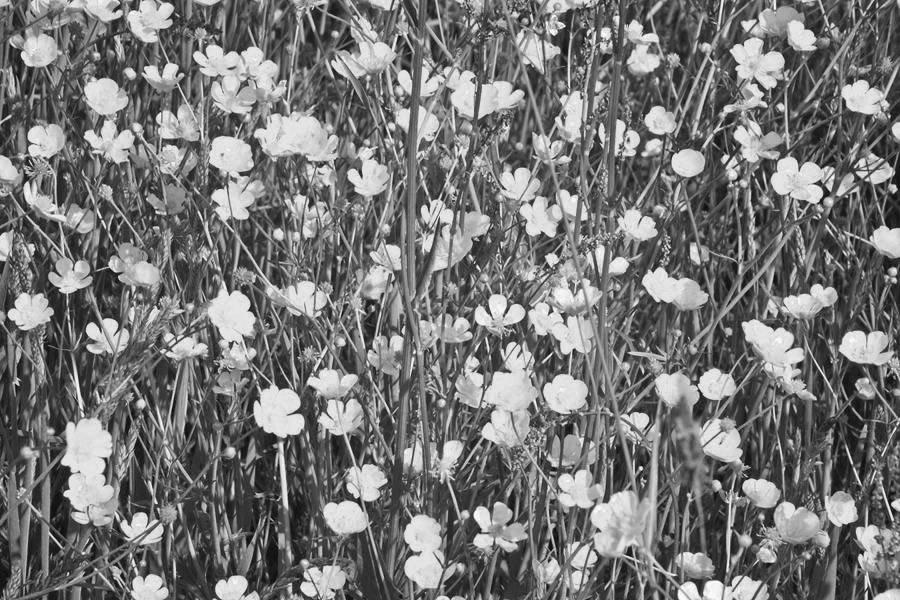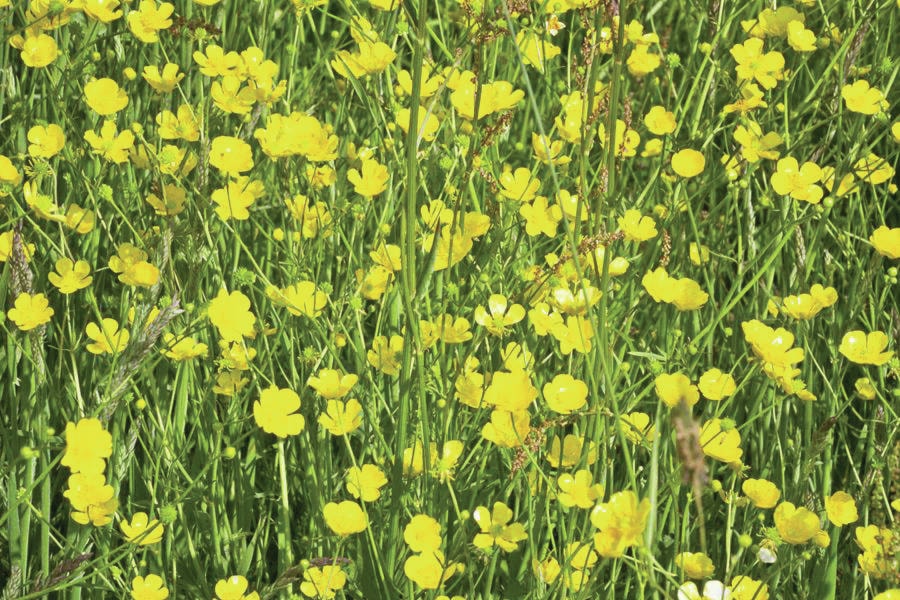Tall buttercup is a perennial that spreads by seed only. Tall buttercup contains a bitter, irritating oil called protoanemonin that is toxic to livestock (especially cattle) and other grazing animals.
While generally avoided by grazers, poisonings can occur when fresh stems and leaves are consumed. Dried plants are no hazard as the toxic oil evaporates quickly. In mild cases, tall buttercup causes irritation or blistering of the skin, mouth and digestive tract. In more severe cases, it can cause paralysis, convulsions and death. Fresh tall buttercup, or hay in some cases, consumed by lactating animals can result in the production of less milk and may turn the milk a tinted red color and give it a bitter taste. Animals tend to avoid grazing tall buttercup if given a choice, but this may also allow it to dominate. Tall buttercup is an alternate host for Anemone Mosaic and Tomato Spotted Wilt virus.
Identification
Stems: are erect, hollow and sometimes hairy, highly-branched in the upper part of the plant, and grow up to 90 centimetres tall.
Leaves: leaves on the lower stem are three-to-eight centimetres long, on long stalks and deeply divided into three-to-five lobes. The upper leaves are smaller, hairy and are divided into three-to-four narrow segments. Basal leaves have no stalks, three simple lobes and are one-to-two centimetres long. The amount and depth of the leaf lobes is highly variable.
Flowers: Are bright yellow, on long stalks and have five petals, each 10-to-14 millimetres long. The upper surface of the petals is waxy, giving them a shiny, lacquered appearance.
Seeds: Each plant produces about 250 seeds, which can remain viable for two-to-four years. The tiny, brown/black seeds are carried easily by water. Seed clusters are prickly and can easily attach to hair and clothing.
Prevention
Use only certified weed-free grass and forage seed. Do not sell or purchase contaminated hay. Good pasture management will help prevent spread.
Control
Cultivation: Pastures severely infested with tall buttercup can be ploughed and reseeded to an annual crop for several years to reduce infestations. Tall buttercup does not persist under cultivation.
Mechanical: Mowing prior to seed set can assist in reducing the infestation; however, it needs to be timely in order to prevent the further spread of seed. Hand picking is suitable for individual plants or small infestations. Be sure to wear gloves and long sleeves as the plant’s juices can cause blistering and redness.
Chemical: Aminopyralid alone (or in a product mix with Metsulfuron-methyl or 2,4-D), MCPB and MCPA (alone or combined in a product mix), Mecoprop-p, and Tribenuron-methyl are registered for use on tall buttercup. Always check product labels to ensure the herbicide is registered for use on the target plant in Canada by the Pest Management Regulatory Agency. Always read and follow label directions. Always read and follow label directions. Consult your local Agricultural Fieldman or Certified Pesticide Dispenser for more information.
Biological: A literature survey completed in 2012 indicated that a couple of very closely related native Ranunculus species in BC and the US would make finding a host-specific agent difficult.

